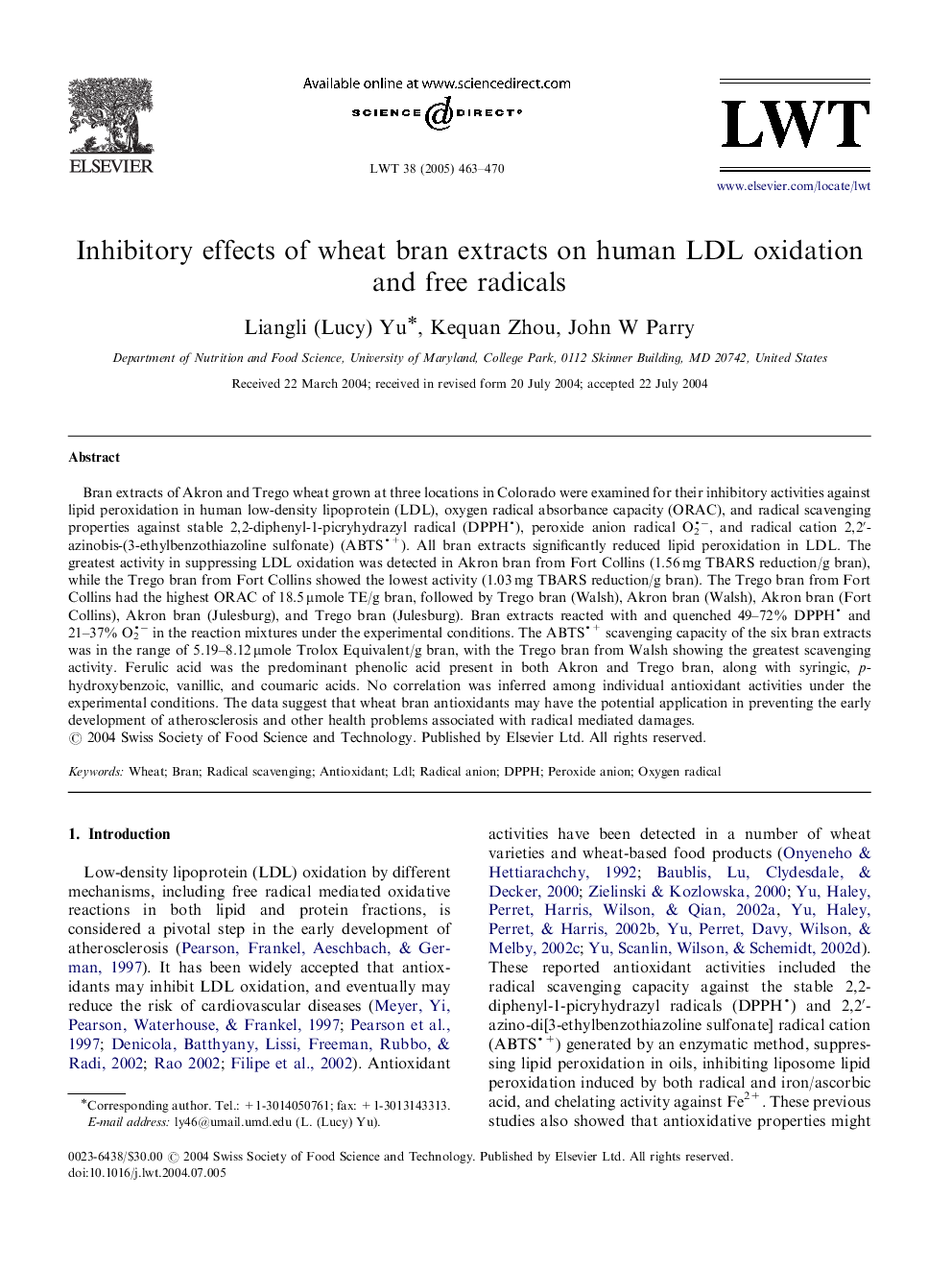| Article ID | Journal | Published Year | Pages | File Type |
|---|---|---|---|---|
| 9488115 | LWT - Food Science and Technology | 2005 | 8 Pages |
Abstract
Bran extracts of Akron and Trego wheat grown at three locations in Colorado were examined for their inhibitory activities against lipid peroxidation in human low-density lipoprotein (LDL), oxygen radical absorbance capacity (ORAC), and radical scavenging properties against stable 2,2-diphenyl-1-picryhydrazyl radical (DPPH), peroxide anion radical O2â, and radical cation 2,2â²-azinobis-(3-ethylbenzothiazoline sulfonate) (ABTS+). All bran extracts significantly reduced lipid peroxidation in LDL. The greatest activity in suppressing LDL oxidation was detected in Akron bran from Fort Collins (1.56 mg TBARS reduction/g bran), while the Trego bran from Fort Collins showed the lowest activity (1.03 mg TBARS reduction/g bran). The Trego bran from Fort Collins had the highest ORAC of 18.5 μmole TE/g bran, followed by Trego bran (Walsh), Akron bran (Walsh), Akron bran (Fort Collins), Akron bran (Julesburg), and Trego bran (Julesburg). Bran extracts reacted with and quenched 49-72% DPPH and 21-37% O2â in the reaction mixtures under the experimental conditions. The ABTS+ scavenging capacity of the six bran extracts was in the range of 5.19-8.12 μmole Trolox Equivalent/g bran, with the Trego bran from Walsh showing the greatest scavenging activity. Ferulic acid was the predominant phenolic acid present in both Akron and Trego bran, along with syringic, p-hydroxybenzoic, vanillic, and coumaric acids. No correlation was inferred among individual antioxidant activities under the experimental conditions. The data suggest that wheat bran antioxidants may have the potential application in preventing the early development of atherosclerosis and other health problems associated with radical mediated damages.
Related Topics
Life Sciences
Agricultural and Biological Sciences
Food Science
Authors
Liangli (Lucy) Yu, Kequan Zhou, John W Parry,
